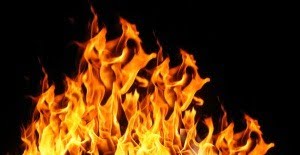
Temperatures in flames and fires
Actualizado a fecha: 2 December, 2018
When looking at a flame’s temperature there are many factors which can change or apply. An important one is that a flame’s color does not necessarily determine a temperature comparison because black-body radiation is not the only thing that produces or determines the color seen; therefore it is only an estimation of temperature. Here are other factors that determine its temperature:
– Adiabatic flame; i.e., no loss of heat to the atmosphere (may differ in certain parts).
– Atmospheric pressure
– Percentage oxygen content of the atmosphere.
– The fuel being burned (i.e., depends on how quickly the process occurs; how violent the combustion is.)
– Any oxidation of the fuel.
– Temperature of atmosphere links to adiabatic flame temperature (i.e., heat will transfer to a cooler atmosphere more quickly).
– How stoichiometric the combustion process is (a 1:1 stoichiometricity) assuming no dissociation will have the highest flame temperature… excess air/oxygen will lower it and likewise not enough air/oxygen.
– In fires (particularly house fires), the cooler flames are often red and produce the most smoke. – Here the red color compared to typical yellow color of the flames suggests that the temperature is lower. This is because there is a lack of oxygen in the room and therefore there is incomplete combustion and the flame temperature is low, often just 600–850 °C (1,112–1,562 °F). This means that a lot of carbon monoxide is formed (which is a flammable gas) which is when in fire and arson investigation there is greatest risk of backdraft. When this occurs combustible gasses, already at or above flash point of spontaneous combustion, are exposed to oxygen, carbon monoxide and superheated hydrocarbons combust and temporary temperatures of up to 2,000 °C (3,632 °F) occur.
Flame temperatures of common items include a candle at 1,400 °C (2,600 °F),[6] a blow torch – at around 1,600 °C (2,900 °F) a propane torch at 1,995 °C (3,620 °F), or a much hotter oxyacetylene combustion at 3,000 °C (5,400 °F).
Fuente: Wikipedia